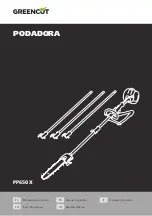
INCRA
IBOX
OWNER’S MANUAL
©2020 by Taylor Design Group, Inc. All rights reserved.
Page 7
OPERATIONS – CUTTING A BOX JOINT
GET READY…
1. PrepareYour Box-Making Stock
You’ll want to begin by preparing your stock. You’ll need
one piece of scrap stock for a test cut. Mark one edge
of all 4 of the box boards. We’ve used a Sharpie for
clarity, but a pencil mark will work just fine, Fig. 12.
2. Install Your Cutter or Blade of Choice
UNPLUG YOUR TABLE SAW OR ROUTER
TABLE
and install the blade or cutter of choice. At
the router table, a 2-flute standard straight bit will
work fine. At your table saw you can use a standard
stack dado, a reversible blade box joint set or a 1/8”
blade with either a flat ground raker tooth or one of
the custom ground box joint blades available, Fig 13.
CAUTION:
DO NOT USE THE IBOX
WITH WOBBLE DADO
SETS OR THIN KERF 3/32”
SAW BLADES!
3. Stock Ledges Apart, Pin Plates Together
Bring the IBOX to your table. Loosen and slide the
blade guard to the side for a clear view. Also loosen
and slide both stock ledges away from the center of
fence to provide clearance during setup. Double check
to make sure that the pin plates are together. If you
need to adjust the pin plates, loosen the positioning
lock knob located on top of the fence and turn the red
knob counterclockwise to bring the pin plates together,
Fig. 14 and Detail 14A.
Whether you are cutting box joints at the table saw or the router table, the set up
routines are the same. We’ll detail the routines in this section with images from
the table saw, but be sure to review the included DVD to see both stations in action.
Fig. 12
Prepare Stock
4 pieces for box with
reference line on one
edge
Scrap piece for test cut
Fig. 14
Stock Ledges Apart, Pin Plates Together
Slide blade guard to
the side
Slide stock ledges apart
to provide clearance in
the center
Fig. 13
Blade Types
Detail 14A
Pin plates
together
Standard Stack Dado Set
Reversible Blade
Box Joint Set
Special Grind Box Joint
Blade
2-Flute Straight Bit






























